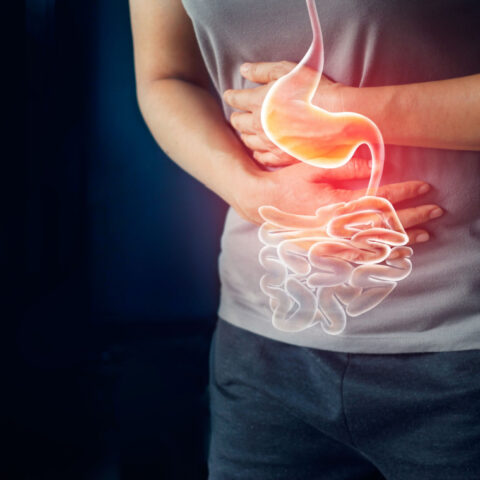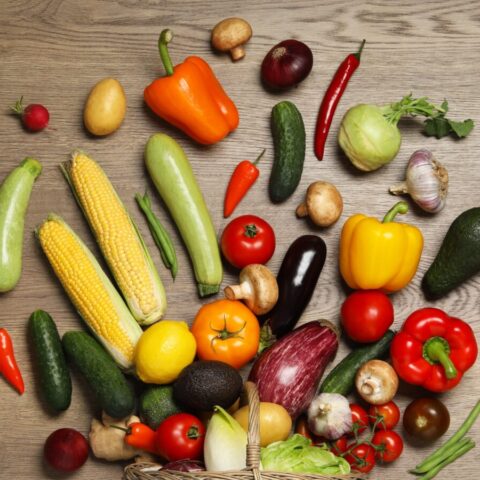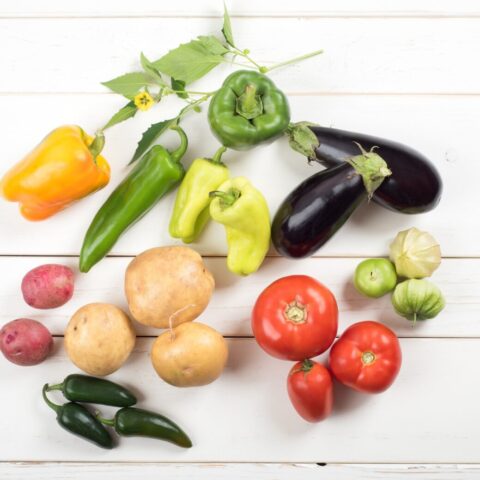How to Start an Autoimmune Protocol Diet

Reviewed by Dr. Mark J. Smith on December 23, 2021
If you have an autoimmune disease, you are no stranger to symptoms of digestive discomfort, swelling, and fatigue. Before your next flare-up, it may be prudent to try an AIP diet to identify food triggers before they happen.
Autoimmune disease affects more than 24 million people in the United States, and those numbers are on the rise.[1] They also predominantly affect women at a rate of two to one. [2]
There are more than 80 different known autoimmune diseases. The most common are celiac disease, Grave’s disease, type 1 diabetes, inflammatory bowel disease, lupus, rheumatoid arthritis, multiple sclerosis and psoriasis.[3]
Autoimmune diseases have no cure. However, your diet plays a huge role in how symptoms show up. Here’s how to start an elimination diet to help you identify triggers, manage symptoms, and improve the quality of your life.
What Is an Autoimmune Disease?
The body’s immune system is your major defense against disease and infection. The immune system comes to your rescue by attacking and destroying foreign germs, such as viruses and bacteria.
For people with an autoimmune disease, the immune system doesn’t work as it’s supposed to. Instead, it mistakenly attacks its own healthy cells in one or more parts of the body. The cause of autoimmunity is unknown, though things like genetics, infections, injuries and environmental factors may be possible triggers.[4]
How an Elimination Diet Might Help
Fortunately, you might be able to manage symptoms of an autoimmune disease with an elimination diet.
An elimination diet is a short- or long-term diet that removes specific foods that may be contributing to unwanted symptoms. The goal of the diet is to determine if any of the restricted foods are causing symptoms.
If symptoms improve during the elimination phase, the restricted foods are reintroduced one at a time to see if symptoms return. This continues until all eliminated foods are either reintroduced or completely removed, creating an individualized eating plan.[5]
What’s an AIP Elimination Diet?
There are lots of different elimination diets out there, but there’s one created just for treating autoimmunity. It’s called the Autoimmune Protocol Diet (AIP) — and sometimes it’s even known as the Autoimmune Paleo Diet!
This specific type of elimination diet is used to help reduce inflammation (especially in the gut), pain, fatigue and other symptoms of autoimmune diseases.[6]
The AIP diet avoids foods that may irritate the gut and trigger an autoimmune response like grains, legumes, nightshades, and added sugar. The goal is to balance gut flora by eating nutrient-rich foods, ultimately reducing inflammation and relieving symptoms.[7, 8] Gradually, you can add back the foods that were removed to see if any response occurs. If it does, the food(s) should be completely eliminated from the diet.
In addition to diet modifications, there are certain lifestyle changes that are encouraged, like getting enough sleep, reducing stress, and regular exercise. [9]
Starting an AIP Diet
Before you start an elimination diet, check in with a registered dietitian nutritionist. The diet may feel limiting at first, so it can help to have knowledgeable support. Plus, you’ll be sure that you’re following the diet correctly and that all your nutritional needs are being met.
The elimination phase of the AIP diet removes the following foods:[10]
- Grains
- Legumes/beans
- Nuts/seeds
- Nightshade vegetables (tomatoes, potatoes, eggplant, peppers)
- Eggs
- Dairy products
- Dried fruit
- Processed foods
- Chocolate
- Seed-based spices (i.e. anise, fennel)
- Added sugars
Note that if you’re already on The Paleo Diet, that leaves only a few new foods to steer clear of. Since you’re already avoiding grains, legumes, dairy, sugar and processed foods, you’ll just have to cut back on nightshades, nuts, seeds (including seed-based spices), eggs, dried fruit, and chocolate.
In addition, substances like tobacco, alcohol, and coffee should be avoided.
Fortunately, there are still plenty of foods you can eat. These include:[10]
- Vegetables (except for nightshades)
- Tubers (sweet potatoes and yams, but not cassava)
- Organic grass-fed meats, poultry, and seafood
- Coconut (oil, milk, flour, coconut yogurt)
- Non-dairy fermented foods (kombucha, low-salt kimchi, sauerkraut)
- Bone Broth
- Teas (green, black)
- Oils (olive oil, avocado oil)
- Herbs (not from seeds)
- Vinegars
- Natural sweeteners (maple syrup, honey)
- Fresh fruit*
*Some protocols recommend avoiding fruit, though others recommend limiting fruit to 1-2 servings per day.
The elimination phase of the diet lasts from 30 to 90 days, or until there has been a definite improvement in symptoms. Then, the second phase of reintroducing foods begins, where foods are gradually reintroduced into the diet one at a time.[11] The goal here is to identify which food(s) may be causing a response and/or symptom(s) to worsen.
The reintroduction of foods typically follows these steps:[10]
- Choose just one food to reintroduce.
- Eat a small portion of the food and wait 15 minutes to see if you have a reaction.
- If not, eat a slightly larger portion and monitor any changes within the next 2-3 hours.
- If you continue to feel well, eat a normal portion and then wait 5 to 7 days to see if any changes occur. Do not reintroduce other foods at this time.
- Next, try reintroducing another food. If you experience a reaction and/or symptoms, continue to avoid that food.
If you experience any adverse effects on foods you are reintroducing, it’s recommended to contact your healthcare provider so you can be properly tested for any sensitivities, allergies, or intolerances.
Tips to Remember
- Preparation is key. Set yourself up for success by doing your research before jumping into the AIP diet.
- Don’t let yourself feel deprived! Search for exciting recipes and new ways to incorporate the foods you can eat to keep things positive.
- Go shopping before your elimination diet starts so that you are completely prepared with all of the foods you will need for meals and snacks.
- If you can, prep meals in advance for the week.
- Remove temptations and get rid of any foods that you are eliminating.
- Take detailed notes! It will be helpful to log the foods you are reintroducing and to jot down any symptoms, and how you are feeling both mentally and physically.
The Bottom Line
An autoimmune protocol diet may not be for everyone, but there have been studies that find relief in symptoms and improved quality of life for some people. If you suffer from an autoimmune disease, it may be worth it to try this elimination diet so you can identify any triggering foods. If nothing else, it may be a good way to reset your gut bacteria and increase the amount of nutrient-rich foods you’re eating. We hope it helps!
More Resources
- Autoimmune Association: https://autoimmune.org/
- Office on Women’s Health: https://www.womenshealth.gov/a-z-topics/autoimmune-diseases
- Autoimmune Wellness: https://autoimmunewellness.com/opt-in/
References
- Rose NR. Prediction and prevention of autoimmune disease in the 21st century: A review and preview. Am J Epidemiol. 2016;183(5):403–6
- Angum F, Khan T, Kaler J, Siddiqui L, Hussain A. The Prevalence of Autoimmune Disorders in Women: A Narrative Review. Available from: https://www.ncbi.nlm.nih.gov/pmc/articles/PMC7292717/
- Autoimmune Diseases [Internet]. Nih.gov. [cited 2021 Nov 20]. Available from: https://www.niehs.nih.gov/health/topics/conditions/autoimmune/index.cfm
- Autoimmune Diseases [Internet]. Clevelandclinic.org. [cited 2021 Nov 20]. Available from: https://my.clevelandclinic.org/health/diseases/21624-autoimmune-diseases
- What is an elimination diet [Internet]. Eatright.org. [cited 2021 Nov 20]. Available from: https://www.eatright.org/health/allergies-and-intolerances/food-intolerances-and-sensitivities/what-is-an-elimination-diet
- Leech B, McEwen B, Sekyere EO. Diet, digestive health, and autoimmunity: The foundations to an autoimmune disease food pyramid—part 2. Altern Complement Ther. 2020;26(4):158–67.
- Fletcher J. AIP diet: What is it and what can you eat? [Internet]. Medicalnewstoday.com. 2020 [cited 2021 Nov 20]. Available from: https://www.medicalnewstoday.com/articles/320195
- Vieira SM, Pagovich OE, Kriegel MA. Diet, microbiota and autoimmune diseases. Lupus. 2014;23(6):518–26.
- Stojanovich L, Marisavljevich D. Stress as a trigger of autoimmune disease. Autoimmune Rev. 2008;7(3):209–13.
- Petre A, MS, (nl) RD. AIP (Autoimmune Protocol) diet: Overview, food list, and guide [Internet]. Healthline.com. 2020 [cited 2021 Nov 20]. Available from: https://www.healthline.com/nutrition/aip-diet-autoimmune-protocol-diet
- James Burgin. The Autoimmune Paleo Diet [Internet]. Mindd.org. [cited 2021 Nov 20]. Available from: https://mindd.org/diet/autoimmune-paleo-diet/




